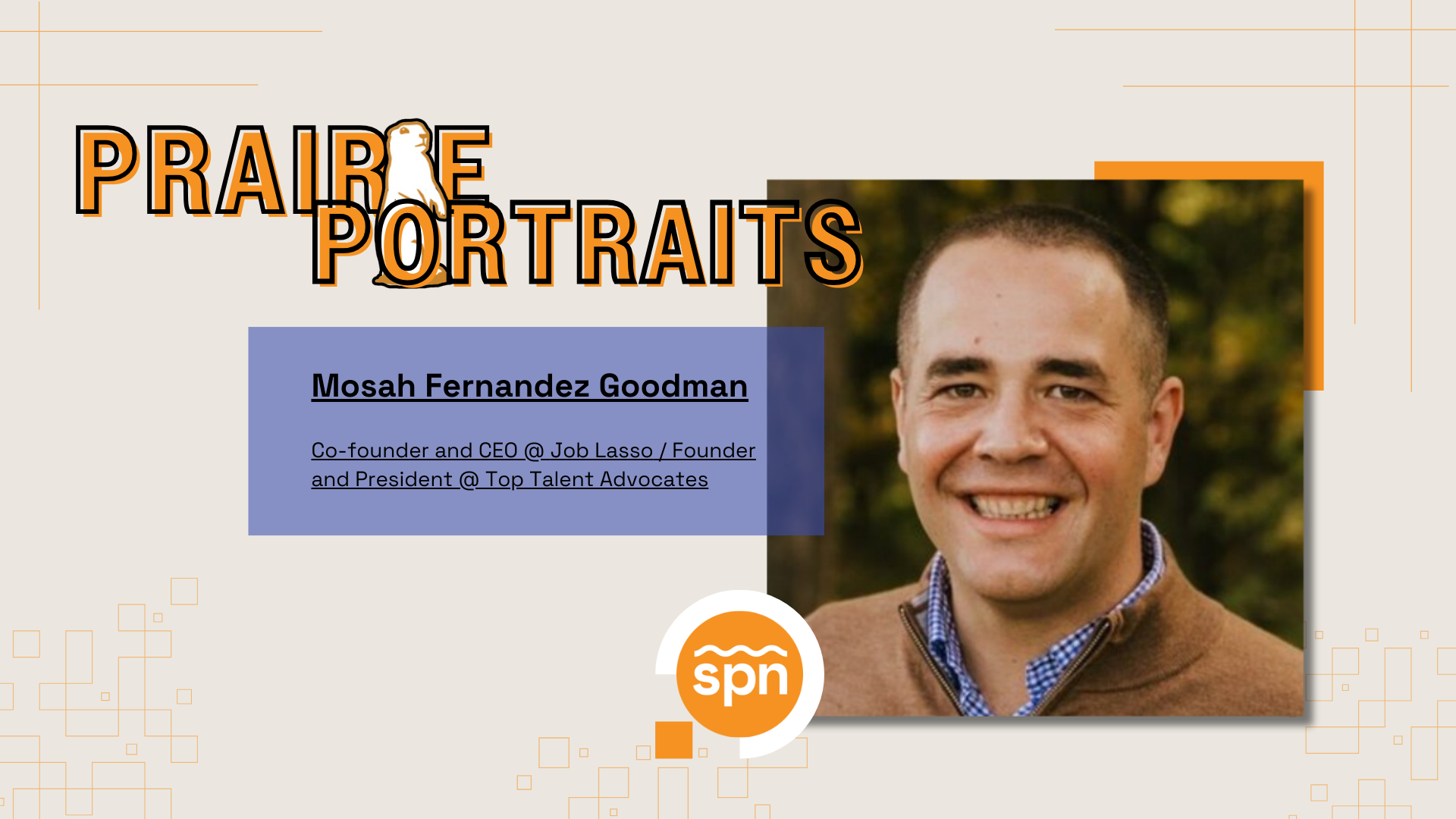
One of Nebraska’s newest software companies looks and sounds like a startup, and it tends to act like one.
It’s got five young developer employees. Its products are mobile-based and innovative like a lot of startups. Its website looks like any other. The team practices lean principles.
But there’s something inherently different about Valvora, a software as a service company focusing on human relations and management solutions, among other things.
This difference is something you wouldn’t pick up from looking at its website. This “startup,” while looking, sounding and practicing lean methodology isn’t your typical startup.
Valvora is part of Union Pacific as an innovative division of a what may be seen as a slow-moving railroad company that’s 152 years old. Its name is a play off a “valve” releasing software from the railroad giant.
The outside perception to the Average Joe may be that the last innovative thing Union Pacific did was build the Transcontinental Railroad in the 1860s.
Not so, says Lynden Tennison, UP’s chief information officer, as he sits in his fifth-floor office in Union Pacific’s downtown Omaha headquarters. There’s a map of UP’s rails on the round table in his office, but there’s software on his mind.
“We’re not the rust belt, old-school company we’re made to be,” he says. “We’re leading edge, current. We’re doing impressive things with tech. I’ve worked at American Airlines, AT&T’s Bell Labs and at the Department of Defense research labs. I’ve seen bleeding-edge stuff and we’re right there with it in our industry.”
Figuring it out
 Luke Christiansen is one of 1,400 IT employees for Union Pacific.
Luke Christiansen is one of 1,400 IT employees for Union Pacific.
And it was Christiansen, a one-time intern turned nine-year veteran, who was asked to head up this new endeavor almost a year ago. Pulled into Tennison’s office, the 10-minute conversation went something like this: take products UP had built for internal use and figure out which ones would be commercially viable.
And with that, there was an innovative division inside a 152-year-old Fortune 150 railroad company.
“It’s an entrepreneurial mindset in a corporate world,” Christiansen said. “What it can do in corporate America is infuse a mindset of innovation that we traditionally lack. Usually there’s long cycles of development and it only serves UP.”
Not so much anymore. For decades UP built its own software because they weren’t happy with the enterprise options out there and they had enough technical muscle to pull it off. They even acquired a small video game development shop to create virtual reality training programs of rail yards and trains for new hires.
For decades, UP has sold some of its proprietary software on a transportation level as PS Technologies, which marketed crew management and other products and sold it to other railroads. Those products generated $35–$40 million in revenue a year, by some reports.
But this is different as it was to a wide swath of medium to large businesses.
“I spent six months beating down doors and asking what products we even had out there,” Christiansen said.
It turns out there was a lot, given the company’s 45,000-plus employees, with maybe as many as half with company-issued mobile devices or tablets.
That meant at least 20,000 employees who needed a specific toolkit of apps to do their jobs. And that’s 20,000 people who were downloading each and every app on their own.
UP programmers wrote a private app store they’re now marketing to large corporations with multiple locations or floors that are in similar positions.
The App Station is the first beta product released by Valvora and allows large groups with similar app needs to download a toolkit of apps. They can click a generated link to enroll in their specific user group in App Station, for instance, a regional manager group or engineering group, and be ready to roll in minutes. The App Station also allows for large-volume purchasing to get discounts on bulk licenses on apps. It also allows easy access to private apps created by larger companies that wouldn’t make sense to put in the public stores.
“It allows you to distill the chaos in the public Google Play and iTunes App Store,” Christiansen said. “You get the right apps to the right people without having to wade through everything and then have them create an expense report to get paid.”
Innovating inside a Fortune 500 company
 Lynden Tennison says he can’t name many other Fortune 500 companies dedicating its workforce to working on products outside its own companies.
Lynden Tennison says he can’t name many other Fortune 500 companies dedicating its workforce to working on products outside its own companies.
(There are some innovative divisions of large companies, like fellow Fortune 500 company, Nordstroms).
But there’s a reason he’s trying it: to return value to shareholders. How? By disrupting the marketplace, he said.
The traditional sales model for enterprise software is expensive, slow and filled with direct sales, requests for proposals and contract negotiations.
“We do the same thing, but without the traditional sales model with reps, contracts and mess,” he said. “It’s a fresh approach to making tech viable to the marketplace, because we redefine the marketplace for the software.”
He said he thinks it’s fairly unheard of to see this level of software offered at a subscription model. They don’t have a huge direct sales force, but offer attractive pricing with limited contract terms and an easy way to opt in and out. So for App Station, something they already built, why not offer it at a disruptive price point and try to regain some costs.
“To us, this is purely economic,” he said. “There’s value. Others don’t do it because they feel there are too many risks—and we’re aware of this—we can’t lose focus on our core reasons why we exist, but we have a clear understanding of the mission.
“We can justify their existence with the revenue they produce.”
Valvora is a way to recover the cost of creating in-house software and it may even drive revenue growth for UP, Tennison said. But there’s other benefits, too. He’s able to offer a more appealing environment for his programmers, giving them a chance to work for a big corporation, but also creating something that will be available in the commercial marketplace. He said that will help recruit and retain talent.
The product, once in the hands of others, has a chance to get better since other companies may use it in a different way, so then they also get a better product out of it.
Into the future
Valvora has a leash, but Tennison is willing to give it room and time to grow.
“We tend to have staying power. We will be here as a company and will use every ability we have to make this successful work,” he said. “We won’t plow zillions in it, but our tendency is not to change for the flavor of the day. We give it time to breathe and we intend to see this be successful and will stay the course on it to make it successful.”
That being said there are goals Tennison has in mind. Goals he wasn’t willing to share, but he said he trusts Valvora to adapt to meet those goals.
Christiansen says there’s plenty of other software he’s excited about, like an upcoming release of Innovation Station. He calls it a “suggestion box on steroids” and it’s worked well in Union Pacific, which has served as an incubator of sorts for the idea.
Employees from any department and level can submit an idea, it gets peer reviewed anonymously (instead of having it go up the chain) and if it gets enough votes from your peers, the company gives them $3,000 and three weeks to run with the idea.
“We’ve had a few ideas that have been huge and had multi-millions in savings,” he said. “You don’t have to submit it to 14 different bosses to get it to happen.”
So how do you market products like this? Christiansen said having the CIO on his side is huge as he’s reaching out to contacts at other companies. Otherwise, they’re starting local and then soliciting through phone calls and emails just like any other company.
“You’d have to assume that more people would be willing to try out software from an institutional company with a huge team behind it,” Christiansen said.
And internally, it’s changing the way Christiansen feels about his company.
“It’s changing the mindset and shifting culture to think about writing software that has a competitive advantage on a much larger scale instead of just meeting a Union Pacific need,” he said. “We write for the best in the world and not just us.”
He still is surprised by it.
“I see Sprint partnering with TechStars in KC and it makes sense. It’s a mobile tech company and startups,” he said. “A transportation company with a tech company is a bit more far-fetched. Not many companies are going so outside of their core business.”
Credits: Video from Valvora on Vimeo.




One response to “The startup that grew from inside a 152-year-old Fortune 150 company”
[…] Read more about Valvora’s internal innovation through our previous coverage: “The startup that grew from inside a 152-year-old Fortune 150 company.” […]